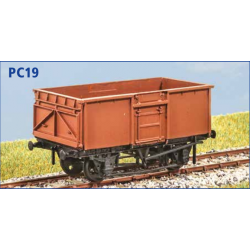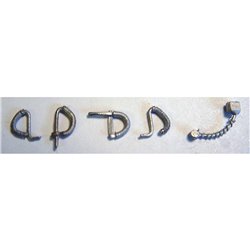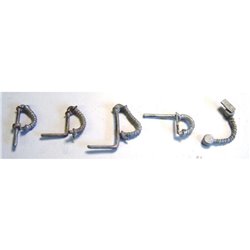Static grass puffer bottles work by manually charging model grass fibres with static electricity. When the charged...
No products
Product successfully added to your shopping cart
There are 0 items in your cart. There is 1 item in your cart.
Search Tips
Were individual goods wagons ever fitted with brakes?
Individual goods wagons were indeed fitted with brakes. Here's why brakes are essential for controlling the speed and stopping of trains, including individual goods wagons. Braking systems vary depending on the era and type of wagon, but here are some common examples:
- Handbrakes: many goods wagons were equipped with handbrakes, which were manually operated by the wagon's crew. Handbrakes consisted of a hand lever or wheel located on the wagon's body. Turning or pulling the lever applied braking force to the wheels, allowing the crew to control the wagon's speed or hold it stationary.
- Vacuum Brakes: in later years, vacuum brakes became prevalent on goods wagons. Vacuum braking systems used a vacuum created by a steam-powered or later an air-powered vacuum pump on the locomotive. This vacuum was used to apply braking force to the wagons' brakes, thus enabling the crew to control the train's speed and stopping distance more effectively.
- Air Brakes: in more modern times, goods wagons have been equipped with air brakes. Air brakes rely on compressed air to apply and release braking force. A locomotive or brake van provides the necessary compressed air, which is then distributed to the wagons via an air pipe. The wagon's brake cylinders and brake shoes are activated by the compressed air, allowing for controlled braking.
These braking systems were crucial for maintaining safety, especially when operating trains with multiple wagons. They allowed for controlled deceleration, preventing excessive forces on the couplings and ensuring the safe movement of goods.
When modelling goods wagons on a model railway, accurately representing the braking systems adds realism and authenticity to a layout. This can involve including the appropriate brake gear, brake levers or pipes on the wagons. It's important to research the specific era and region being modelled to ensure the correct type of brakes are represented.
By incorporating braking systems on individual goods wagons, a modeller can showcase the operational aspects and historical developments in railway technology, making the layout more accurate and engaging.
Click here to receive the tips weekly in your mailbox. You can unsubscribe at any time.










